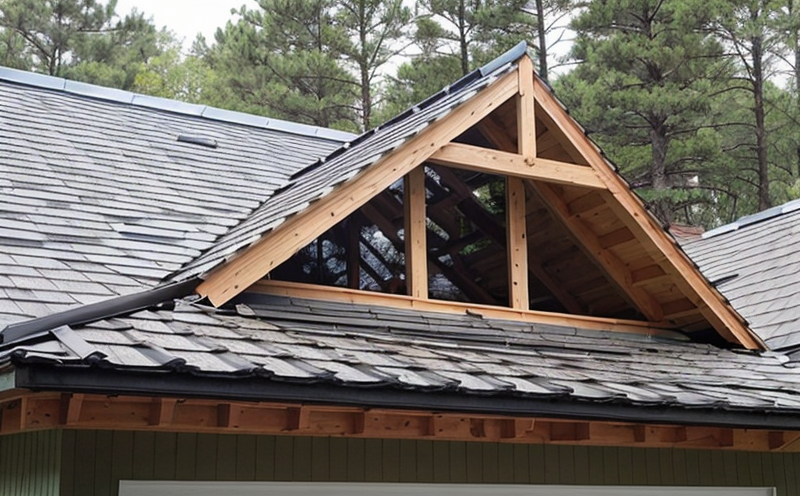Roof framing inspection
The integrity and safety of buildings depend heavily on proper roof framing. Roof framing inspection is a critical process that ensures compliance with building codes, enhances structural stability, and improves the durability of roofs. This service involves detailed examination to identify any deviations from established standards, ensuring that all components meet the required specifications.
Roof framing typically includes rafters, trusses, purlins, and other supporting structures that ensure the roof's load-bearing capacity. During inspection, we focus on several key aspects:
- Alignment and spacing of members
- Use of appropriate materials
- Proper fastening methods
- Insulation and vapor barrier placement
- Weatherproofing and drainage systems
The inspection process is meticulous, involving both visual assessment and non-destructive testing (NDT) techniques. Common NDT methods used include ultrasonic testing, infrared thermography, and magnetic particle inspection. These tools help identify any hidden defects or discrepancies that might not be apparent through simple observation.
Roof framing inspections are crucial for several reasons. First, they ensure compliance with local building codes and standards such as ANSI A14.1, which governs roof truss construction in the United States. Compliance with these regulations is essential to prevent safety hazards and avoid potential legal issues.
Secondly, regular inspections contribute significantly to extending the lifespan of roofs. By identifying early signs of wear or damage, we can recommend timely repairs that prevent more extensive and costly renovations later on. Additionally, this service helps maintain energy efficiency by ensuring proper insulation and ventilation within the roof structure.
In terms of quality assurance, roof framing inspections play a vital role in maintaining high standards across various construction projects. These inspections not only meet but often exceed industry expectations, providing peace of mind to clients regarding their investments.
Why It Matters
The importance of roof framing inspection cannot be overstated in the context of construction and building safety. Properly inspected roofs contribute significantly to overall structural integrity, ensuring that buildings can withstand environmental stressors like wind, rain, snow, and temperature fluctuations.
From a practical standpoint, well-inspected roofs reduce maintenance costs by catching issues early on. Early detection allows for minor adjustments or repairs before they escalate into major problems requiring substantial reconstruction efforts. This proactive approach saves both time and money, making it an essential component of any comprehensive building maintenance strategy.
In addition to financial benefits, roof framing inspections also enhance public safety. Buildings equipped with sound roofs are less likely to experience catastrophic failures during severe weather events or heavy loads. By adhering strictly to established standards, we contribute to safer communities and environments.
Furthermore, compliance with regulatory requirements ensures that projects meet all necessary criteria set forth by authorities responsible for overseeing construction activities. This adherence fosters trust between stakeholders involved in the project lifecycle—from architects designing new structures to owners managing existing properties.
Quality and Reliability Assurance
At our laboratory, we employ a rigorous quality control process for every roof framing inspection conducted. Our team consists of experienced professionals who adhere strictly to international standards such as ASTM D7854 (Standard Practice for Inspection of Roofing Installations) when performing these assessments.
The first step in this process involves thorough documentation of all observed conditions during the inspection. This includes detailed notes on structural alignment, material quality, fastener placement, and any other relevant factors affecting roof integrity. These records serve as a reference point for future inspections or troubleshooting any issues that may arise after installation.
Following initial observations, we utilize advanced diagnostic tools like thermal imaging cameras to detect potential areas of concern within the roofing system. This technology allows us to visualize heat signatures indicative of moisture intrusion, which could indicate compromised waterproofing layers or improper insulation placement.
In cases where further evaluation is necessary, we may recommend destructive testing using techniques such as core sampling or pull tests on fasteners. These methods provide concrete evidence regarding the strength and durability of materials used during construction. The results from these analyses are then incorporated into our final report along with recommendations for improvements if needed.
Our commitment to excellence extends beyond merely meeting baseline expectations; we strive continuously to exceed industry benchmarks through innovative practices and continuous improvement initiatives aimed at enhancing overall service quality.
Competitive Advantage and Market Impact
- Innovation in Inspection Techniques: We stay ahead of competitors by incorporating cutting-edge technologies into our inspection protocols. For instance, integrating drones for aerial surveys offers unparalleled visibility over large roof areas, enabling more accurate assessments than traditional methods.
- Comprehensive Reporting: Our detailed reports go beyond mere descriptions; they offer actionable insights based on the findings from each inspection. This approach helps clients make informed decisions about necessary repairs or enhancements to their properties.
- Pioneering Approach to Sustainability: By emphasizing sustainable practices during inspections, we not only comply with current regulations but also position ourselves as leaders in green building initiatives. Clients benefit from reduced environmental impact while simultaneously enhancing the value of their assets.





